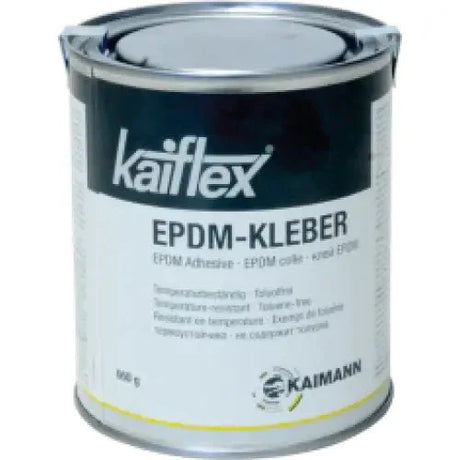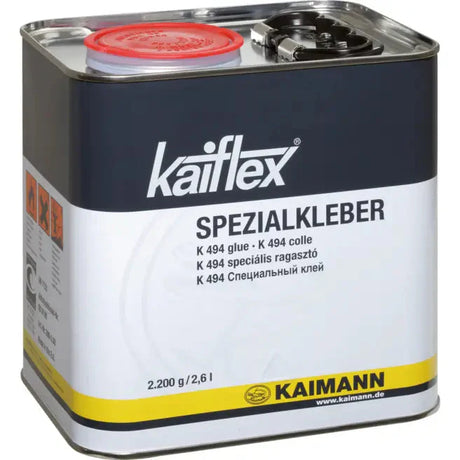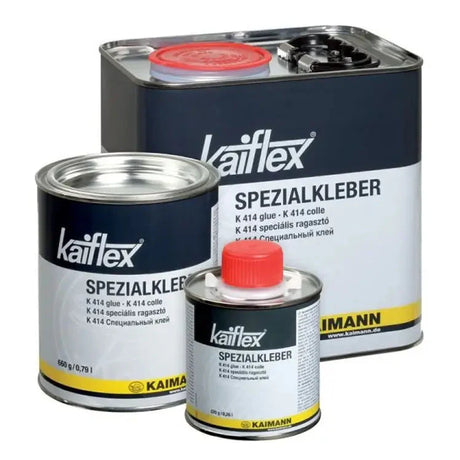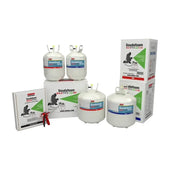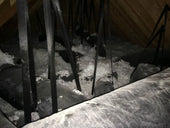Table of Contents
- Introduction
- Insulation Required in Floor Voids
- Insulation in Unheated Spaces
- Hot Water Pipes Must be Insulated
- Minimum Insulation Thicknesses
- Insulating Pipes Near Cylinders
- Judgement Allowed in Tight Spaces
- Insulating Secondary Circulation
- Transitional Timeline for Compliance
- Communicating with Inspectors
- Industry Guidance Expected
- Conclusion
- Resources
Introduction
The UK's National House Building Council recently released updated technical guidance regarding pipe insulation requirements for space heating and hot water systems in new home construction. The new guidelines aim to limit heat loss and improve energy efficiency, but also have significant implications for how builders design and outfit heating and hot water systems.
In this article, we'll explore the top 10 most important changes introduced in the new pipe insulation guidelines. For each change, I'll explain the specific technical requirements and analyze the impact on homebuilders, inspectors, and related trades.
1. Insulation Required in Floor Voids
One major change is the mandate to insulate space heating pipes as they pass through intermediate floor voids. Builders now must install insulation on these in-slab pipe sections, even if they then transition to run behind plasterboard below. This applies to any void space between floors where heat could escape.
For homebuilders, this means planning pipe layouts more carefully to allow access for insulation in the void. They may also need to use higher grade insulation suitable for enclosed spaces. Passing compliance inspections will require demonstrating that floor voids are adequately insulated.
2. Insulation in Unheated Spaces
The new guidelines also require space heating and hot water pipes run through unconditioned areas to now be insulated. This includes garage spaces, attic voids, and exterior wall cavities. Insulating these pipe sections will prevent wasted heat loss outside the thermal envelope.
Builders must take care to install proper insulation on any pipes that pass through unconditioned attics, garages, or cold wall spaces before enclosing them. Tradespeople must also be mindful not to damage or omit insulation on these pipes during other construction activities.
3. Hot Water Pipes Must be Insulated
Whereas previous guidance focused mainly on space heating pipes, the new guidelines specifically mandate insulation on domestic hot water pipes. This includes hot water flow and return pipes, as well as primary circulation pipes connecting to hot water storage tanks.
Plumbers and heating specialists will need to ensure hot water transport pipes are properly insulated, especially as they pass through voids and unheated areas. Omitting insulation on these pipes could lead to costly rework to pass inspection.
4. Minimum Insulation Thicknesses
The new guidelines include a table defining the minimum required insulation thickness for different pipe diameters. Insulation conductivity and maximum heat loss parameters are also specified.
Builders must ensure the insulation planned for each pipe meets these minimum thickness values based on its size and insulation material type. Non-compliant insulation could fail inspection even if pipes are covered.
| Outside diameter of pipe (mm) | Thermal conductivity (W/m/K) | Insulation thickness (mm) |
|---|---|---|
| 8 | 0.025 | 5 |
| 8 | 0.03 | 7 |
| 8 | 0.035 | 9 |
| 8 | 0.04 | 12 |
| 8 | 0.045 | 16 |
| 10 | 0.025 | 6 |
| 10 | 0.03 | 8 |
| 10 | 0.035 | 11 |
| 10 | 0.04 | 15 |
| 10 | 0.045 | 20 |
| 12 | 0.025 | 7 |
| 12 | 0.03 | 10 |
| 12 | 0.035 | 14 |
| 12 | 0.04 | 18 |
| 12 | 0.045 | 23 |
| 15 | 0.025 | 9 |
| 15 | 0.03 | 12 |
| 15 | 0.035 | 15 |
| 15 | 0.04 | 20 |
| 15 | 0.045 | 26 |
| 22 | 0.025 | 11 |
| 22 | 0.03 | 14 |
| 22 | 0.035 | 18 |
| 22 | 0.04 | 23 |
| 22 | 0.045 | 29 |
| 28 | 0.025 | 12 |
| 28 | 0.03 | 16 |
| 28 | 0.035 | 20 |
| 28 | 0.04 | 25 |
| 28 | 0.045 | 31 |
| 35 | 0.025 | 13 |
| 35 | 0.03 | 17 |
| 35 | 0.035 | 22 |
| 35 | 0.04 | 27 |
| 35 | 0.045 | 33 |
5. Insulating Pipes Near Cylinders
For systems with hot water storage tanks, pipes must now be insulated for 1 meter from connections on the tank. This includes the cold water inlet, hot water outlet, and circulation links.
Installers must carefully insulate all pipework near cylinders, even in cramped spaces. Building inspectors will check that no uninsulated pipe sections are left exposed within 1 meter.
6. Judgement Allowed in Tight Spaces
The updated guidelines acknowledge that insulating pipes may be impractical in some constrained areas. This includes pipework within joist zones or tightly sandwiched between plasterboard layers.
Builders are given discretion to use their best judgement in skipping insulation in very tight spaces. However, they should document the circumstances thoroughly to justify any exceptions during commissioning.
7. Insulating Secondary Circulation
Any secondary hot water circulation pipework must now also be insulated to prevent background heat loss. Secondary circulation uses recirculation pumps and branch return lines to keep hot water readily available.
Construction teams must take care to identify secondary circulation pipes and properly insulate them along with other hot water transport lines.
8. Transitional Timeline for Compliance
The guidelines provide transitional timescales for the industry to adopt the changes. England and Wales have until January 2024 to fully implement the new standards. Scotland has an earlier deadline of February 2023.
Homebuilders should begin integrating these pipe insulation specifications into all new projects going forward. Waiting until the deadlines could overload resources as all builders start adopting changes at once.
9. Communicating with Inspectors
With more stringent insulation requirements, communication with inspectors will be crucial. Builders should highlight how specifications are met, and explain any cases where full insulation is impractical.
Photos, diagrams, and on-site explanations showing obstacles and solutions will help substantiate instances of pipes not being fully insulated as required.
10. Industry Guidance Expected
As builders adapt practices to meet the new guidelines, issues and ambiguities will inevitably arise. Additional industry guidance is expected to address common questions and clarify uncertainties.
Technical experts anticipate providing further support information once builders have gained hands-on experience implementing the new specifications at scale.
Conclusion
The UK’s updated pipe insulation guidelines represent a significant change for homebuilders. With stringent new requirements now in place for insulating space heating and hot water pipes, construction practices will need to evolve.
Close cooperation across trades will be essential to spot and resolve any insulation issues. And open communication channels with regulators must be maintained, especially when deviations from the technical guidance are required.
At the end of the day, adhering to the new guidelines will result in improved energy efficiency and homeowner benefits. But getting there will require commitment and diligence from builders to apply the specifications properly at scale across all new housing projects.
Resources
- TG No: 8.1/35 Issue 1: Pipe Insulation requirements for space heating and hot water systems in new dwellings
- Approved Document L volume 1 (2021) for England
- Approved Document L Wales (2022 edition)
- Domestic Building Services Compliance Guide for Scotland (2022)
- Technical Handbook: Domestic - F1 Conservation of fuel and heat (Scotland)
- BS 5422:2009
- BS EN ISO 12241:2008
- CIBSE Domestic Heating Design Guide
- NHBC Standards
- Approved Document L - UK building regulations


